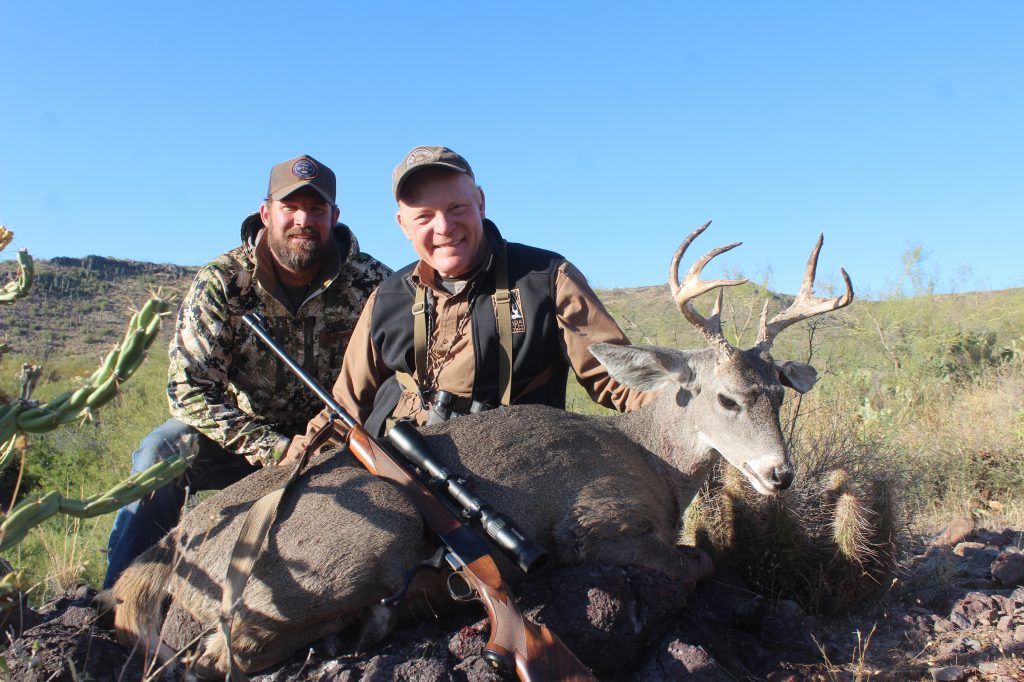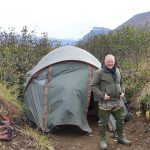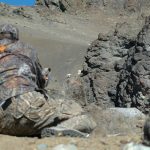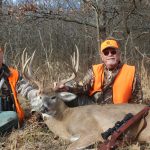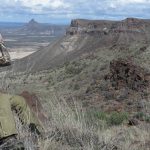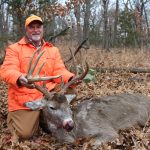Hunting Coues deer in the desert Southwest tests your glassing skills like no other hunt will.
As decreed by Father Time, my eyes aren’t what they once were. Even so, with long practice, I’m usually pretty good at spotting game. Even without the vision I was once gifted with, experience counts. The human eye seeks movement, the flick of an ear or tail. With long practice, we also seek texture and light reflection, different on hair and horn than leaf and limb. And, when vegetation is vertical, we seek the horizontal of back and belly lines.
I hate it when somebody else sees game first, even the great African trackers, who are magicians. I’ve seen these guys pick up animals—or parts of animals—that I needed 10X glass to resolve. No hunter’s experience is complete–it’s just not possible in this big world–but mine is pretty extensive. I’ve never seen hunting that requires glassing more difficult, more extensive, or more intensive, than hunting Coues whitetails in the desert mountains of the Southwest.
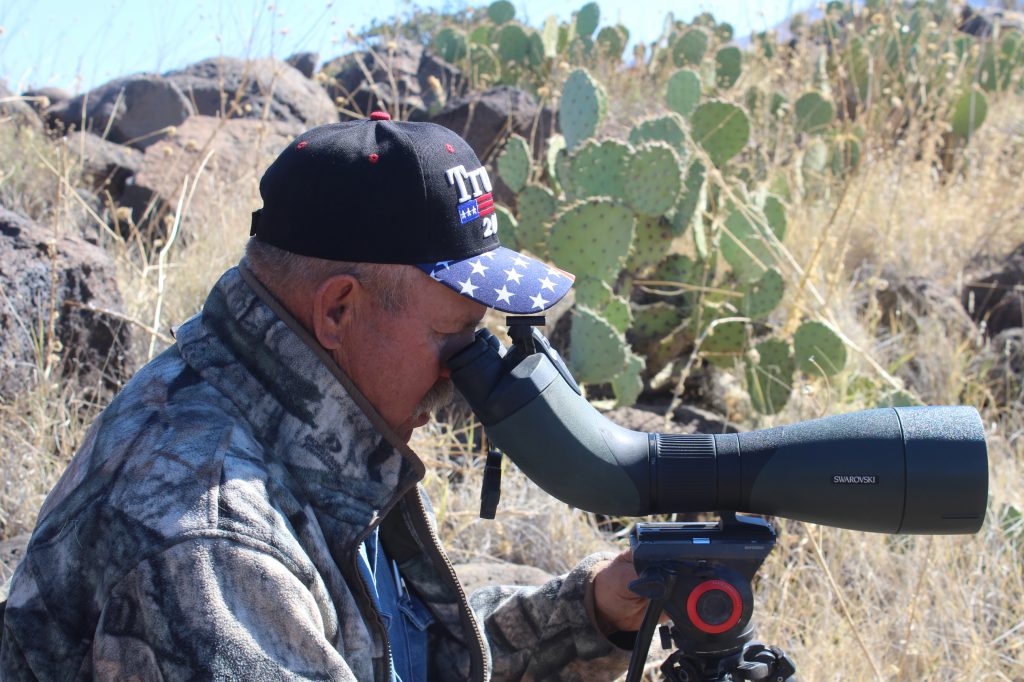
They are small deer, thinly distributed in huge country, neutral gray, in a multi-colored world of rocks and cacti, with branches, limbs, and stems in any imaginable shape. In Arizona and Mexico, finding Coues whitetails against this difficult background developed into an art form that I have long called “postgraduate glassing.” Mind you, the techniques and equipment are applicable elsewhere. However, hunting Coues whitetails is a passion and hunting culture centered in the arid mountains of Arizona, where the Master of Glassing degree was created.
For sure, I had no influence in its creation. Nor, in times gone by, or even today, is intensive glassing always necessary. The late George W. Parker was a great hero to me and, in his last years, a friend. Over the course of nearly fifty years, Parker put seven Coues whitetails in the Boone and Crockett records. In Parker’s early days there might have been more deer, but for sure there were fewer hunters. Most of his big bucks were taken by riding slowly through desert hills, jumping deer and getting a shot. My introduction to Coues deer hunting wasn’t much different. I started with legendary Arizona outfitter Warner Glenn and his dad, the late Marvin Glenn. Hunting on riding mules, we stopped often to glass, but most deer were taken by riding slowly, jumping or spotting deer and making a quick stalk for a shot.
A few years later I got a call from a young Arizona fellow inviting me to put in for a Coues deer tag. I drew, and that was the first time I ever saw a binocular mounted atop a sturdy tripod. It was an eye-opening experience, and we hunted Coues deer together for several seasons. Duwane Adams and I were hunkered under a cedar during a rainstorm in the Galiuros when he asked, “Boddington, if I got a guide license, do you think people would pay money to hunt these little deer?”
Adams has now been a legendary Coues deer outfitter for a long time, often called upon to give glassing seminars. What I learned from him, now forty years ago, is that 10X is not enough. For most of my hunting, and most hunting worldwide, a 10X binocular will do all you need to do. There are many situations where more magnification is useful, but in Coues deer hunting, 10X isn’t enough, and handholding your binocular doesn’t cut it. The country is just too big, and the deer too small and difficult to spot.
Over the years, Coues deer glassing developed as a cult, with 12X, 15X, and 20X binoculars secured to steady tripods as the preferred method. For most of my hunting, I still use a 10X binocular, backed up with a spotting scope on a tripod. The spotting scope is indispensable for judging antlers and horns, but you can’t really glass with it, too much eyestrain from using just one eye. There are spotting scopes with dual eyepieces, and dual spotting scopes. For this kind of intensive glassing we need to use our binocular vision but, as magnification increases, field of view shrinks.
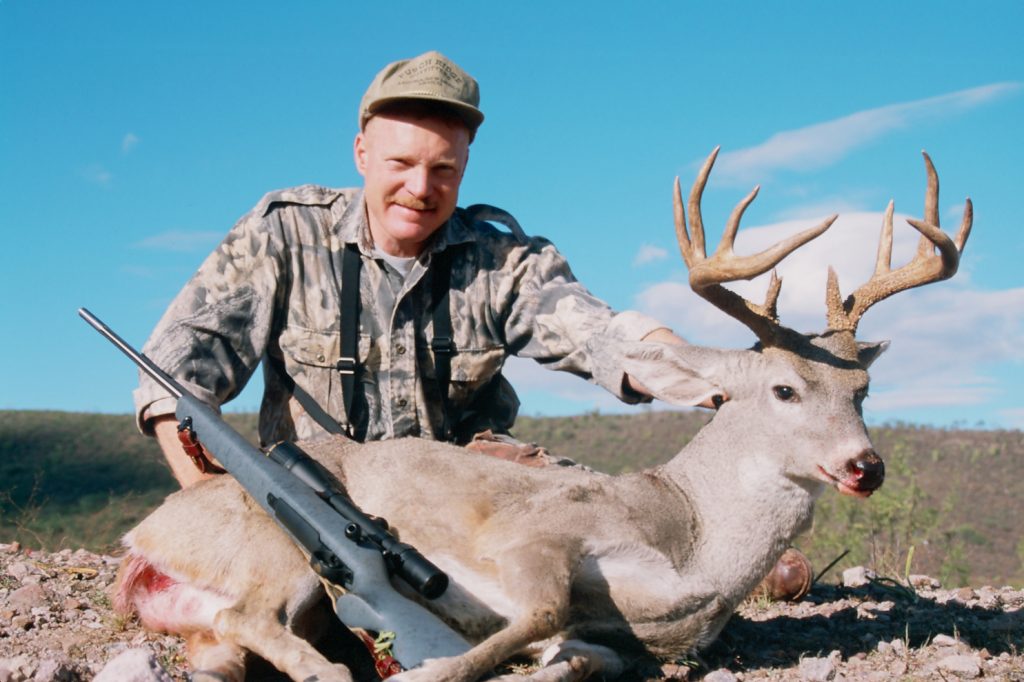
So, extra-powerful binoculars are probably the best tools, but the real secret is the tripod. It isn’t just distance alone; these little deer are hard to see. Regardless of magnification, the stability of a tripod greatly extends your ability to see. The theory is that the deer are there; it’s your job to find them. I don’t claim that I was ever really good at this kind of glassing; it takes extreme patience, dismantling a distant ridge one piece at a time, over and over again.
I fell in love with the Southwestern mountains, so harsh in summer and so wonderful in cooler months. Wildlife is fragile in desert habitat, so Arizona was one of the first Western states to go to across-the-board drawings for deer. In the mid-1980s I got rejected a couple of times. By then I’d become addicted to hunting Coues deer, so I started going to Mexico.
Coues deer are widely distributed in Arizona and in the Mexican states of Chihuahua and Sonora, and just tip into southwestern New Mexico. In Arizona, most Coues deer hunting is on public land. In Mexico nonresident hunting is on private land. The biggest Coues deer have come from Arizona, but my experience is the average is much better in Mexico. For sure, because you’re hunting on managed private land, you see more deer in Mexico. I hunted in either Chihuahua or Sonora almost annually for nearly twenty years. The country and techniques are the same, with glassing techniques imported from Arizona. Down there, too, I had good mentors, mostly Kirk Kelso, a master with his 20X binocular on a tripod. After a several-year break, I hunted Coues deer in Sonora again in 2018 with Ted Jaycox of Tall Tine Outfitters. Ted’s technique is the same: Big binoculars on a steady tripod, preferably from a comfortable camp chair!
I don’t claim to be good at this painstaking glassing. I lack the required patience, but I have a lot of experience. The reward comes when one of these small, elusive deer shows up in the field of view at some absurd distance. On good ranches in Mexico you see a lot of deer, so even my short attention span isn’t sorely tested.
I’ve enjoyed the Coues deer hunting in Mexico so much that it’s been many years since I applied in Arizona. But sometimes fate throws odd curves. Early in 2020, daughter Brittany and son-in-law Brad Jannenga acquired a cattle ranch north of Phoenix–in time to apply for tags. We drew for a late October season so, suddenly, I was back in the Arizona Coues deer hunting business.
I’d been in Kansas working food plots and intended to swing home before the hunt and pick up a bigger bino and tripod adapter. Didn’t happen, so I wound up glassing with a hand-held 10X binocular. Fortunately, Brad is a good Arizona hunter and had the gear. As did his friends. In Arizona, any tag is a hard-won prize; draw a permit, and you’ll probably have volunteers to help with the glassing. Mike Hughes and Max Nichols, experienced Arizona hunters, were on hand with big glasses on tripods.
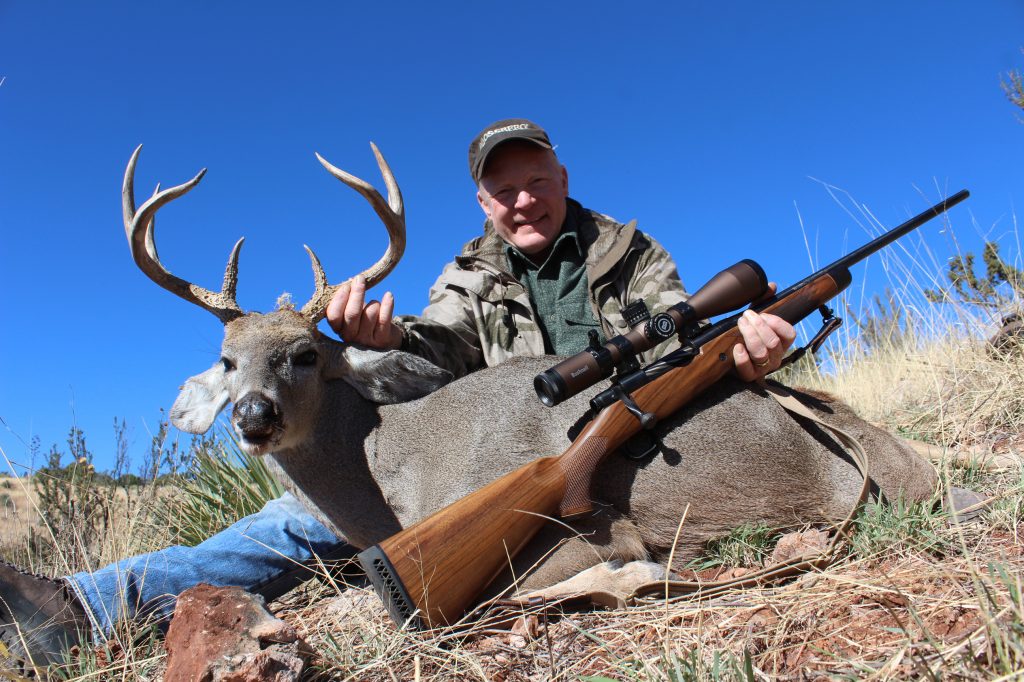
Scouting for deer had been far down the priority list in getting the ranch going, so we went in pretty cold, with good knowledge of the terrain but not much on deer. Also, it was October, still warm and very dry. I’d never hunted Coues deer this early, always in December or January. A couple of flowing springs on grazing leases proved the keys. There were deer, and we found them. Mind you, even when you’re focused on a distant ridge, a deer can pop up anywhere at much shorter range. So, I had a few small victories in seeing deer first, but not many! Honestly, I was so under-equipped that Brad, Max, and Mike had several deer spotted beyond a thousand yards that I never picked up at all with my 10X. More than one vanished before I could get the spotting scope on the right spot.
We had a seven-day season, and we hunted hard. Some days we saw no bucks at all, but, collectively, we glassed about a dozen bucks, some seen more than once. I got a nice buck on the fifth day; Brad got one a day later. All in all, a pretty good week of Coues deer hunting, and we finished with much better knowledge of the area. If we manage to draw that tag again, we’ll have a much better starting point, and I promise I’ll be using proper optics for this postgraduate glassing.
